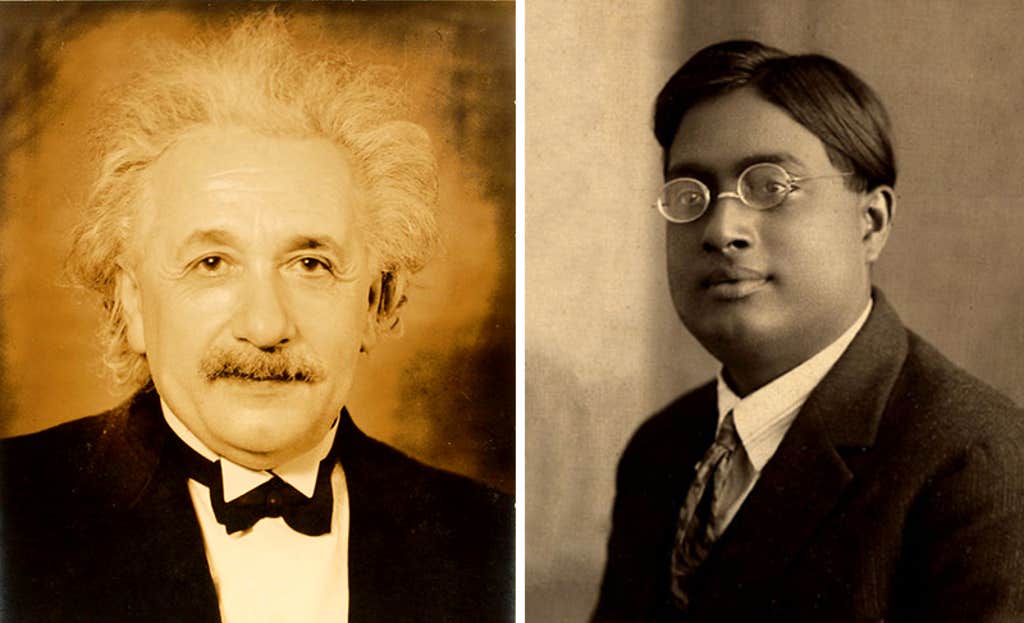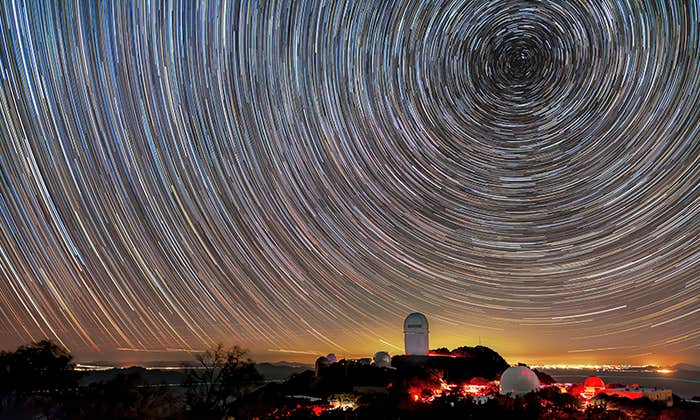There’s an outside chance we’ve been getting black holes wrong.
Physicists had long presumed black holes to be simple: massive gravitational objects, inescapable prisons of overwhelming matter and spacetime collapse.
But the more we study them, the more black holes refuse to cooperate with this picture, born out of Albert Einstein’s general theory of relativity—the sweeping model that explains the workings of gravity at grand scales. It turns out that we do not fully understand what happens at black holes’ centers or borders. Black holes might not even be totally black, as they can emit small amounts of radiation. And perhaps most frustratingly, they have not played nicely with our increasingly sturdy ideas about how energy and matter likely work on the tiny, quantum scale.
Black holes might not be the only giant quantum creatures of our universe.
Which is why some new research is pointing in a different direction. What if, one daring paper posits, we come to understand black holes less as gravitational bodies and more as quantum objects? Perhaps they have refused to conform to our traditional gravitational models because they are, in fact, the largest quantum objects in existence.
Specifically of interest is what is happening at a black hole’s center. In these locations, our classical ideas about gravity and relativity break down, so physicists have attempted to cross over into unwieldy quantum calculations to try to define what might be going on.
In their paper, physicists Nikko John Leo Lobos and Reggie Pantig, from the Technological Institute of the Philippines and the Mapúa Institute of Technology in the Philippines, respectively, conduct a thought experiment of examining black holes as macroscopic consequences of the quantum world—rather than attempting to graft quantum mechanics onto a gravitational description from general relativity.

A quantum object is one dominated by uncertainty, where physicists must use “fuzzy” rules of quantum mechanics to make guesses or predictions (the electron may be over here, or it may be over there), rather than the clean, precise results offered by classical, macroscopic physics. One such fuzzy rule is the Heisenberg Uncertainty Principle, which places a stringent limit on our precise measurements of position and momentum. This principle only applies to very small (quantum) scales. But if there’s a fuzz factor modifying momentum at very small scales, perhaps there’s a balance to it in nature, another fuzz factor modifying position at very large scales—scales the size of black holes. “Nature is fond of symmetry and duality,” Lobos and Pantig write. So are theoretical physicists.
Lobos and Pantig explore the consequences of this idea, elucidating how a natural fuzziness in position might make itself apparent as the event horizon of a black hole. Their mind-bending work shows that it’s possible to start with quantum, not gravitational, foundations and build a working picture of what we call black holes.
In general relativity, a black hole is just a collection of matter compressed into an infinitely tiny point, and the event horizon, the “surface” of the black hole from which you cannot escape, is a natural consequence of that dense collection of matter.
Nature is fond of symmetry and duality.
In the language born from quantum mechanics, however, a black hole is viewed as a special kind of Bose-Einstein condensate, named for Einstein and early 20th-century Indian physicist Satyendra Nath Bose. These condensates are special arrangements of matter where all the particles share the same quantum states, allowing them to sit on top of each other and synchronize their quantum motion, behaving as single, giant particles.
The particles making up the black hole Bose-Einstein condensate are gravitons, the hypothetical quantum carrier of the gravitational. When a black hole forms, this thinking goes, the gravitons pile up together, synchronizing with each other and adding to each other’s gravitational effects. But because particles in a Bose-Einstein condensate share the same quantum states, they can occupy the same position in space, which means that a black hole viewed through this lens would have no reason to be physically macroscopic—in other words, it would be no bigger than any other subatomic particle.
This is where the fuzziness comes in. The new quantum rules employed by Lobos and Pantig smear out the black holes, causing them to take up real, physical space. What we call the event horizon is just the outer boundary of this smearing effect. And so, in this picture, black holes become collections of blown-up quantum particles, viewable and accessible in the macroscopic (even cosmic) world; a completely different way of building black holes, based on quantum, not gravitational, foundations.
From there, the researchers propose how future experimental tests, like more detailed images from the Event Horizon Telescope and its successors, could settle this quantum-vs-classical debate. The properties of quantum-based black holes differ ever so slightly from the properties predicted from general relativity. The differences are small (which they must be, otherwise our old models of black holes would have been tossed out long ago), but they are potentially detectable. Most tellingly, these quantum black holes might have a larger shadow, a term denoting the hole carved out of the light of an image of background light, than traditional black holes. They might also cause greater deflections to the orbits of any objects that wander too close. More refined measurements of the stars near the Milky Way’s own giant black hole, Sagittarius A*, and follow-up missions to the Event Horizon Telescope might be powerful enough to detect these differences.
These ideas exist on a distant horizon of astrophysics.
These researchers are not the only ones to suggest black holes might be operating at least in part as colossal quantum objects. Another team of physicists in Australia and Canada turned to the quantum concept of superposition, in which particles are tied together regardless of the distance between them. Exploding that concept into the macroscopic world, they found that they could recreate the familiar properties of black holes.
And black holes might not be the only giant quantum creatures of our universe. In one proposal, a team of Indian physicists suggest that the cosmological event horizon—the de facto border of our visible universe—might be a quantum artifact as well. Their work follows the same logic of Lobos and Pantig, just on (much) larger scales: A fundamental uncertainty in quantum interactions has macroscopic existences that can explain something traditionally within the realm of pure gravity. But you don’t even have to go to such extremes to find a connection, according to a team of Iranian physicists. They propose a way to apply extended quantum thinking even to the study of extremely hot gasses—a common feature throughout the universe, stretching across our vast cosmic web.
As an astrophysicist, I know these ideas exist on a distant horizon of our field and are often most pursued by scientists outside the familiar United States- and Europe-based institutions that dominate the science news headlines. Many physicists would point out that there’s no reason for quantum fuzziness to exist on such large scales. There’s no motivation from experiments or even theory to extend the Heisenberg Uncertainty Principle the way that these theorists do. And, so far, everything we’ve observed about black holes has conformed to our understanding of general relativity. Until and unless some experiment shows something different, there’s no need to complicate the picture.
But just because the work is surprising and outside of the dense center of the Nobel Industrial Complex doesn’t mean it’s wrong, or even fruitless. Science is about wild ideas. It’s about exploration and daring. It’s about jumping headlong into the darkness and finding the freedom to wonder. ![]()
Lead image: Vadim Sadovski / Shutterstock
































